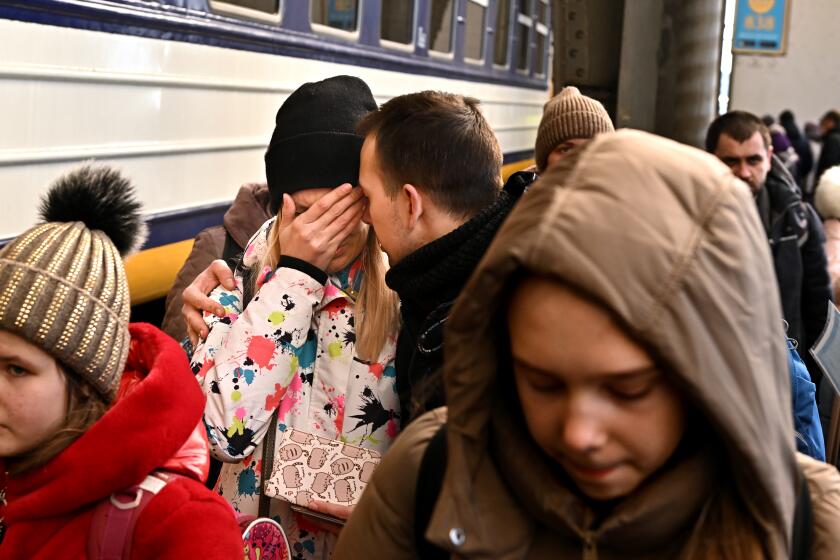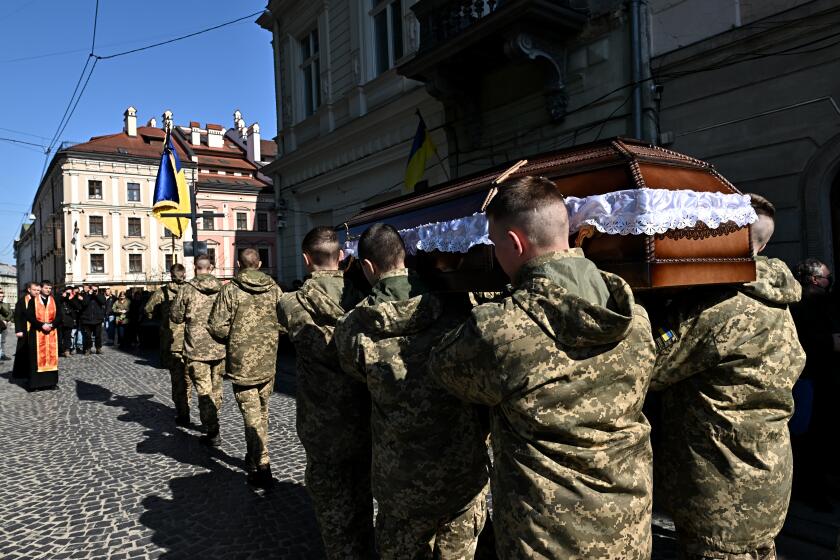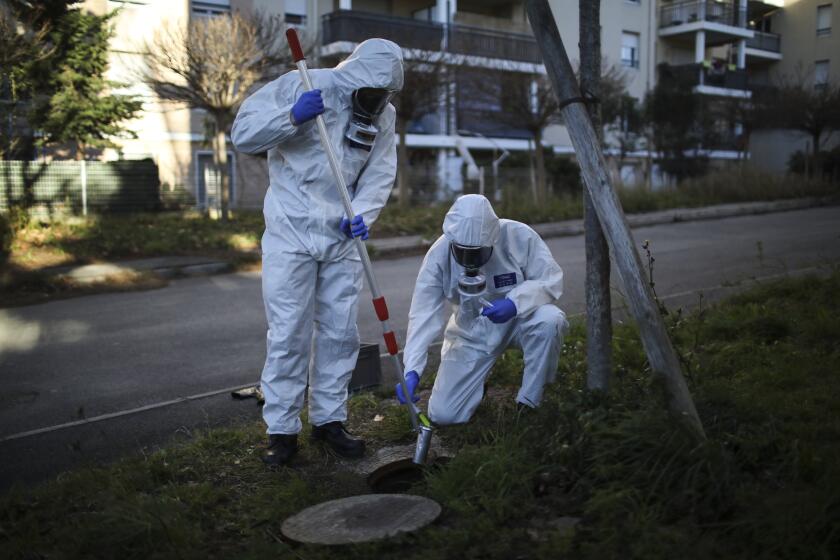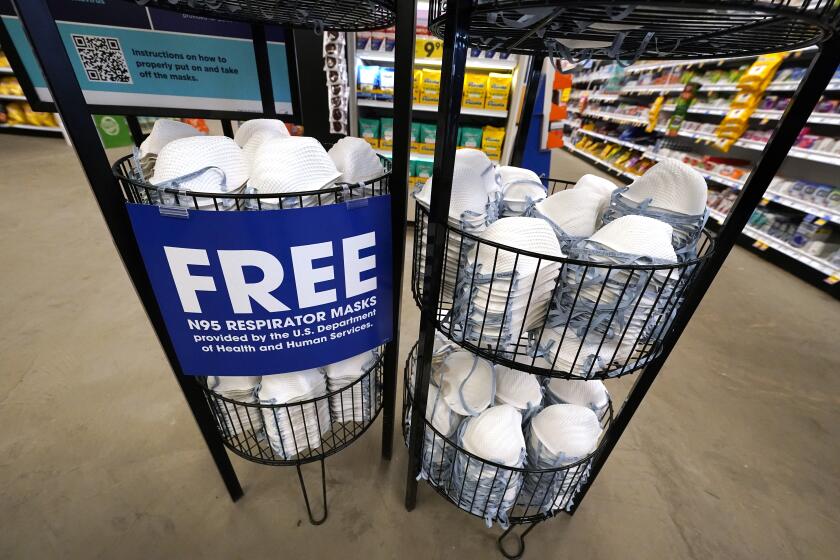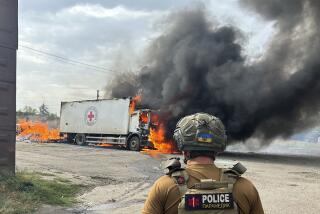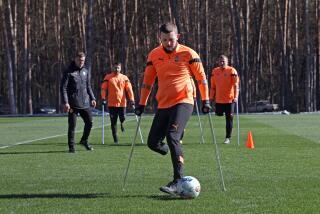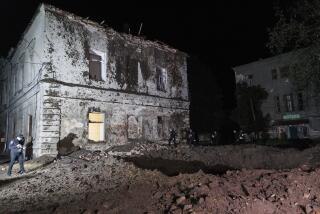Russia spread anti-vax lies in Ukraine. Will it cause a COVID crisis for Europe?
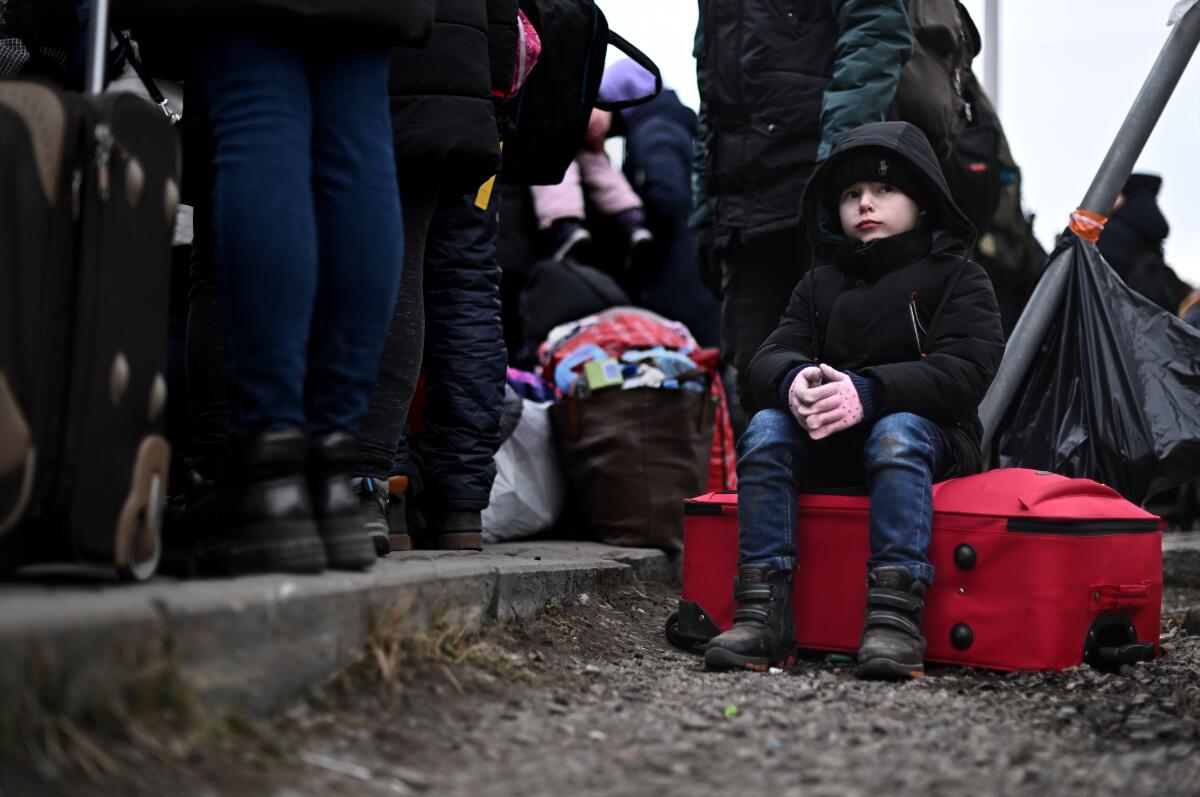
Long before Russia launched its military assault, Ukrainians had been targeted for years by another Russian campaign — one designed to undermine confidence in Western vaccines and the governments offering them to their citizens.
The anti-vaccine messages were actively encouraged by President Vladimir Putin’s government, broadcast by Russian state television, and amplified on social media by Russian computer bots. The offensive was part of a larger effort to sow division within fledgling democracies and heighten suspicion of the West across Eastern Europe and the former Soviet republics.
In Ukraine, the seeds of vaccine skepticism fell on particularly fertile ground. Just 35% of residents are fully vaccinated against COVID-19, and 1% are partially vaccinated — among the lowest such rates in Europe, according to data from Oxford University. Childhood immunizations for diseases such as measles and polio are among the continent’s lowest as well.
That gives public health officials reason for worry as more than 3.6 million Ukrainian refugees have poured into other countries and millions more are displaced within Ukraine, often hunkered down in crowded, frigid places without clean water or electricity.
“COVID doesn’t need crowded refugee camps to thrive,” said Dr. Chris Beyrer, the director of the Center for Public Health and Human Rights at the Johns Hopkins Bloomberg School of Public Health. “Crowded gyms, crowded buses and crowded trains will be enough.”
The flight of refugees through history has incited warnings that they carried disease and pestilence — charges sparked more often by xenophobic hysteria than fact. Across Europe, however, hostility toward Ukrainian refugees has been virtually absent, and public health experts have aired their concerns carefully to avoid compounding refugees’ trauma.
Some 3.2 million Ukrainians have fled the war, and they keep on leaving. Most men stay behind, leading to crushing separations.
Many Ukrainian refugees have been settled away from the congested borders, the European Center for Disease Prevention and Control said in a recent bulletin. But as growing numbers of Ukrainians get backed up at receiving centers, “there is a higher risk of communicable disease outbreaks,” the agency said.
COVID-19 is high on the list of worries.
Ukrainians’ vaccination rate may still overstate their level of protection, Beyrer said. That’s because the COVID-19 vaccines made available to them have varied in their effectiveness against the Omicron variant, and the minority who are fully vaccinated are very unlikely to have gotten boosters, which offer the best protection against severe disease. And virtually none of Ukraine’s children have been vaccinated against COVID-19.
But the coronavirus is far from the only concern. Sizable minorities have also eschewed tried-and-true vaccines against polio and measles, putting refugees — and to a lesser extent, their new hosts — at an elevated risk of outbreaks as they cram into tight places, said Dr. Gabriele Fontana, UNICEF’s regional health advisor for Europe and Central Asia.
Having low vaccination rates against preventable diseases may seem like the least of Ukrainians’ worries right now. Russia’s bombardment of hospitals and civilian centers has killed at least 1,035 people, including more than 112 children, and brought the care of people with life-threatening and chronic illnesses to a halt.
Still, disease outbreaks could compound the miseries of Ukrainians, pose challenges for the countries that shelter them and add to the war’s death toll.
This will “add to the litany of woes,” Beyrer said.
Almost 800,000 Ukrainians have fled to Poland as Russian forces push farther into Ukraine.
Beyond that, the refugee crisis could fuel a fresh wave of COVID-19 in Europe, experts said.
Austria, Germany, the Czech Republic and Slovakia — four countries that are taking in hundreds of thousands of displaced Ukrainians — are already experiencing a major resurgence of new coronavirus infections, driven in large part by the hyper-contagious “stealth Omicron” variant. Hungary also has seen a significant uptick in new cases in recent days.
Adding to the risk is the fact that many of Ukraine’s neighbors have low vaccination rates as well. Slovakia, Romania, Moldova and Bulgaria have rates around 50% or below.
The European Center for Disease Prevention and Control has advised countries accepting Ukrainian refugees to offer eligible adults and children a jab of COVID-19 vaccine if they haven’t been vaccinated, or a booster if they have. To reduce outbreaks at reception centers, the agency also suggests that displaced Ukrainians be tested upon arrival or, if testing isn’t available, that people with COVID-like symptoms be “triaged and managed as possible cases, with appropriate supportive care.”
There is little evidence that any of that is happening at crowded border crossings, and Fontana expressed skepticism about the wisdom of offering vaccines while many families are in transit, given the possibility of fevers and achiness that often follow an inoculation.
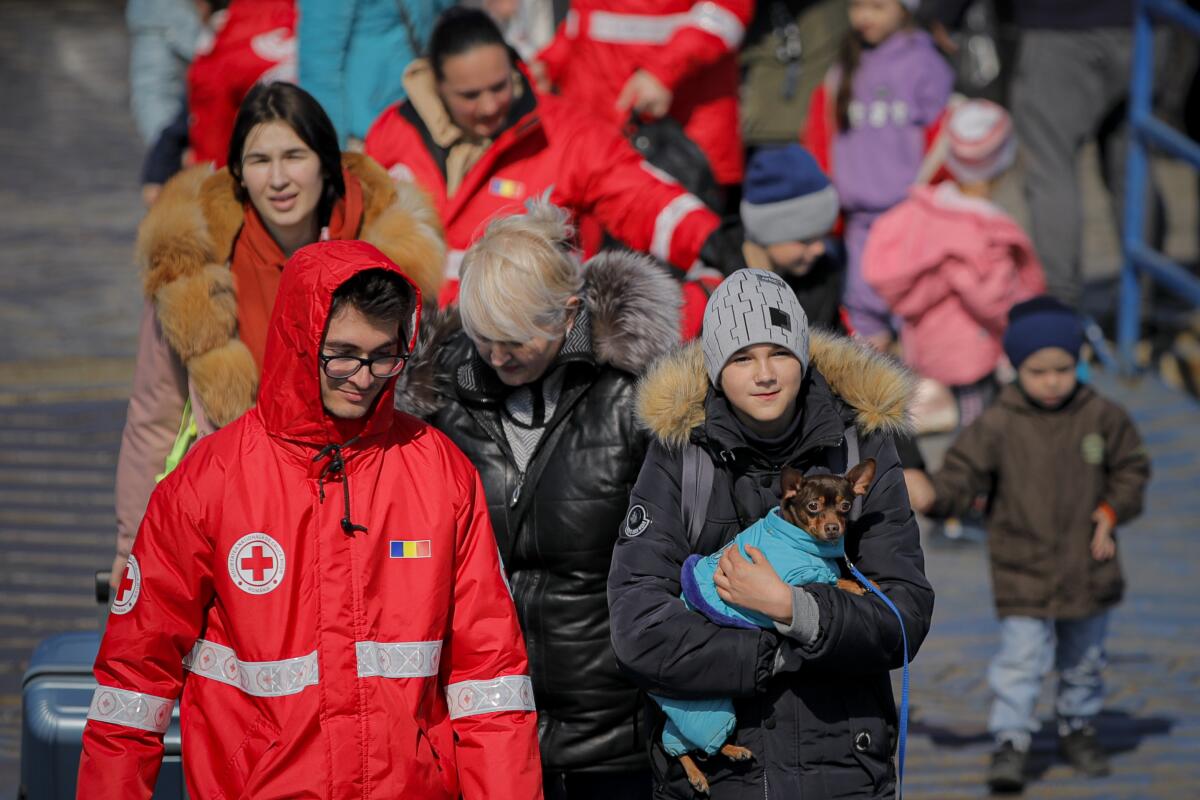
Last fall, as COVID-19 deaths in Ukraine hovered near 100,000 and fewer than 20% of his countrymen were immunized, President Volodymyr Zelensky spoke up. He blamed social media propaganda fueled by Russia and begged Ukrainians to choose vaccination.
Ukrainians need to “switch off social networks and turn on your brain,” Zelensky said. Getting vaccinated “is the only solution,” he added.
His appeals largely fell flat in Ukrainian towns and villages, said Kateryna Odarchenko, a political consultant who has conducted focus groups about vaccine skepticism across the country.
“People believe totally in misinformation, and they don’t believe the government,” Odarchenko said.
Experts are watching for a potential new COVID-19 surge in the U.S. — and wondering how long it will take to detect.
Ukrainians’ vaccine hesitancy is hardly limited to COVID-19.
In 2021, 53% of Ukrainian babies were vaccinated against polio in their first year of life, and the country experienced outbreaks in 2015 and 2021. The reappearance of polio in a region that had been declared “polio-free” in 2002 spurred an aggressive vaccination campaign that was still underway when Russia’s military attacked.
Today, 76% of Ukraine’s children are considered fully vaccinated against polio, but that still leaves nearly 1 in 4 vulnerable to a disease that can paralyze children and cause death or lifelong disability.
The virus that causes polio is spread through oral-fecal exposure, which makes it a potent threat to Ukrainian children hiding from the Russians in basements and subway stations without plumbing or proper sanitation.
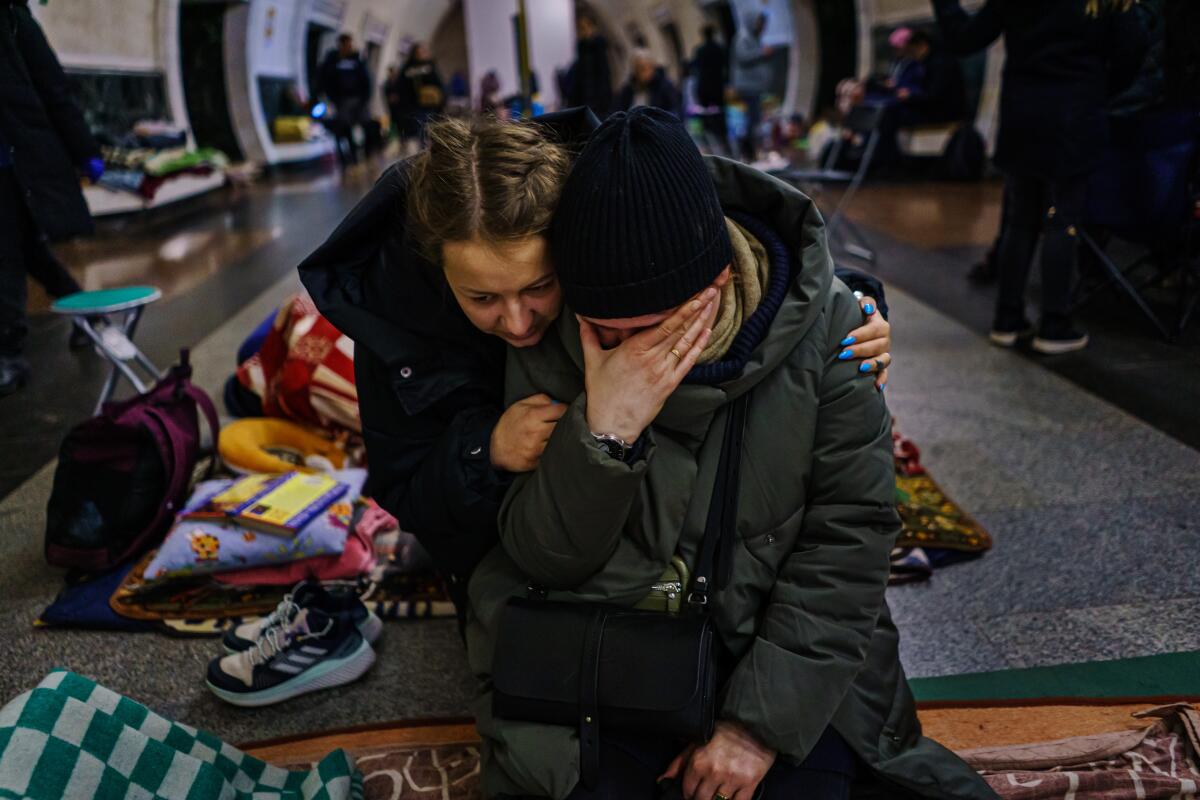
Measles are another concern. Ukraine’s low vaccination rate led to almost 100,000 cases and 31 deaths among children there between 2017 and early 2019, and it drove a resurgence of measles that spread across Europe. Today, 87% of Ukrainian children are fully vaccinated against measles — well below the 98% that public health experts say is needed to prevent outbreaks.
Polio and measles are less likely than COVID-19 to follow refugees out of Ukraine because many of their host countries have fairly high childhood vaccination rates, Fontana said. But those that share Ukraine’s vaccine skepticism — particularly Moldova, Romania and Bulgaria — could be be in danger.
When not kept in check by vaccines, measles outbreaks tend to recur every three years, he added. Since the last outbreak ended in 2019, this could be the year the disease returns.
UNICEF will address this risk by offering measles and polio vaccinations to Ukrainian refugees who want them, Fontana said.
“Without stigmatizing refugees ... is it worth doing catch-up vaccinations in Ukrainians fleeing the fighting? Yes,” he said. “Does the influx of refugees increase the risk of outbreaks in some of the countries they’re fleeing to? Yes, marginally.”
If the U.S. public health emergency ends, Americans would be vulnerable to a new coronavirus variant that sparks another COVID-19 surge.
There is, however, a glimmer of hope that Ukrainians’ resistance to vaccination may ease as European governments open their doors to refugees.
Vaccine resistance in Ukraine is deeply rooted in an “epic distrust” of the government in Kyiv, said University of Pennsylvania anthropologist Kristen Ghodsee. Years of corruption and mismanagement had such a corrosive effect that only 14% of Ukrainians polled in December 2020 said they had confidence in their government.
“Getting vaccinated requires trust,” she said. “You have to believe that the medical establishment ... actually cares and will take care of you.”
The sympathetic welcome Ukrainians are getting from neighboring countries may well elicit the trust they have withheld from their own government.
“If they’re in a refugee camp situation, that’s a terrible public health risk, and people are going to be worried about their kids,” Ghodsee said. “Given that the European Union has bent over backwards to take care of them, I imagine a lot of Ukrainians will ultimately, maybe reluctantly, say yes” to vaccines.
